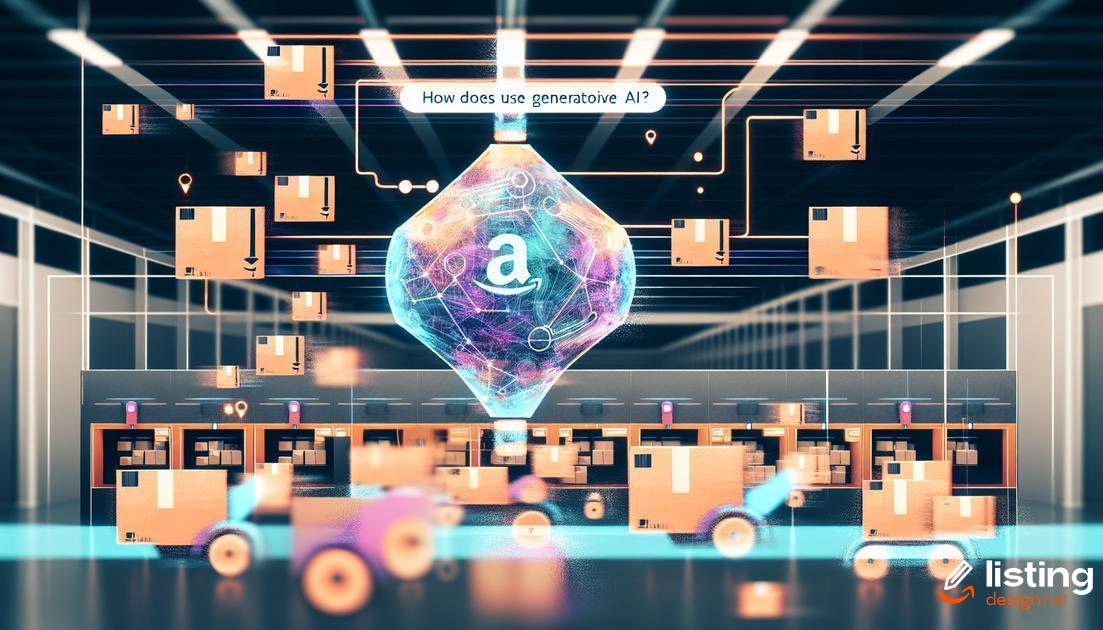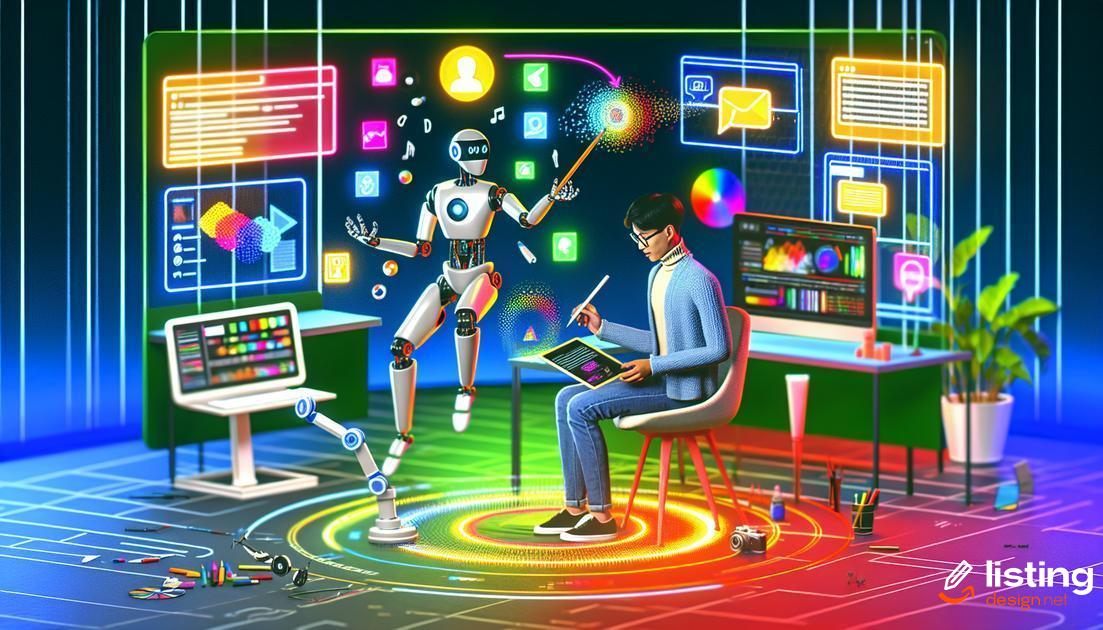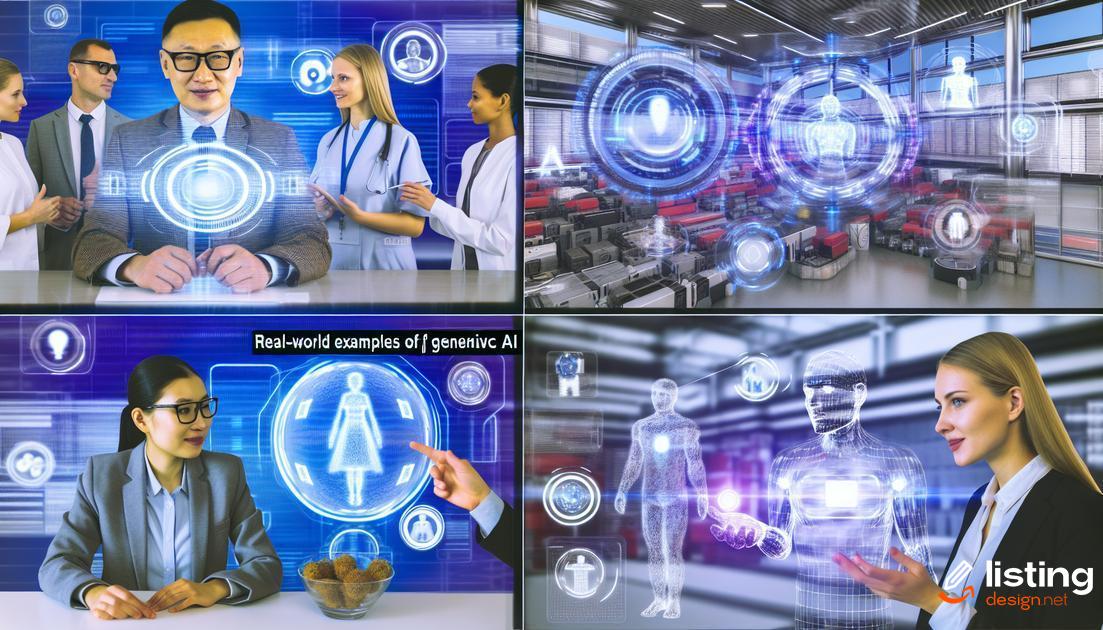Amazon Generative AI is rapidly changing the landscape of e-commerce and various other sectors. This innovative technology is empowering businesses to streamline operations, enhance customer experiences, and unlock new possibilities. In this article, we’ll delve into the world of Amazon Generative AI, exploring its applications, benefits, and potential impact.
Table of Contents
What is Amazon Generative AI?
Amazon Generative AI refers to a collection of artificial intelligence (AI) technologies developed by Amazon that can create new content, automate tasks, and enhance various business operations. Unlike traditional AI systems trained on specific datasets with pre-defined outputs, Generative AI can learn patterns and relationships within data to generate entirely new and original outputs. This can include text, images, code, product descriptions, and even entire marketing campaigns.
How Does Amazon Use Generative AI?

Amazon leverages generative AI across various aspects of its operations. Here’s a glimpse into some key areas:
Product Discovery and Recommendations: Amazon uses generative AI to analyze customer data and generate personalized product recommendations, enhancing the shopping experience.
Content Creation: Generative AI assists in creating product descriptions, generating marketing copy, and even developing visual content for product listings.
Customer Service: AI-powered chatbots and virtual assistants handle customer queries, provide support, and resolve issues, improving response times and efficiency.
Logistics and Supply Chain Optimization: Generative AI helps optimize delivery routes, predict inventory needs, and streamline warehouse operations, leading to faster shipping and reduced costs.
Benefits of Amazon Generative AI for Businesses
Amazon Generative AI presents a wealth of opportunities for businesses to enhance their operations and customer experiences. By leveraging the power of AI, businesses can:
- Automate tasks: Generative AI can automate repetitive tasks such as data entry, content creation, and customer support, freeing up valuable time and resources.
- Improve efficiency and productivity: By automating tasks and streamlining workflows, businesses can significantly improve their overall efficiency and productivity.
- Personalize customer experiences: Generative AI enables businesses to deliver highly personalized experiences by analyzing customer data and generating tailored content, recommendations, and offers.
- Enhance creativity and innovation: Generative AI can assist businesses in brainstorming new ideas, creating innovative products and services, and generating engaging content.
- Gain a competitive advantage: Early adoption of Amazon Generative AI can provide businesses with a significant competitive advantage by enabling them to optimize operations, enhance customer experiences, and drive innovation.
Amazon Generative AI for E-commerce Personalization

Imagine receiving product recommendations perfectly tailored to your style, needs, and even current mood. That’s the potential of Amazon Generative AI for e-commerce personalization. This technology can analyze vast amounts of data – from your browsing history to past purchases and even social media activity – to understand your individual preferences. This allows Amazon to curate a shopping experience that feels uniquely designed for you, suggesting products you might love even before you know you want them.
Enhancing Customer Service with AI
AI can revolutionize customer service by providing instant and personalized support. Imagine AI chatbots that can understand and respond to customer queries in real-time, offering solutions tailored to their individual needs. AI can also be used to personalize customer interactions, anticipate their needs, and provide proactive support, leading to increased customer satisfaction and loyalty.
Generative AI in Content Creation

Generative AI is changing how we think about content creation. Instead of manually crafting each product description, blog post, or social media caption, AI can generate multiple options in seconds, tailored to specific keywords and brand guidelines. Imagine AI crafting unique and engaging product descriptions for thousands of items on Amazon’s marketplace, freeing up human writers to focus on more complex tasks. This is just one way Amazon leverages generative AI in content creation.
But it goes beyond just volume. Generative AI can analyze vast amounts of data to understand what resonates with customers. This allows it to create content that is not only grammatically correct and engaging but also optimized for conversions. Whether it’s generating compelling ad copy or personalized emails that drive sales, generative AI is poised to revolutionize how Amazon creates and delivers content across its platform.
The Impact on Logistics and Supply Chain
Generative AI can analyze vast amounts of data to predict demand, optimize delivery routes, and manage inventory levels more efficiently. This technology can help Amazon anticipate potential disruptions, optimize warehouse operations, and streamline its supply chain for faster and more cost-effective delivery.
Ethical Considerations and Challenges

As with any technology leveraging the power of AI, especially generative AI, it’s crucial to address the ethical considerations and challenges they present.
Data privacy is a significant concern, as these AI models require massive datasets for training. Ensuring the responsible and ethical use of this data, while protecting user privacy, is paramount.
Bias in training data can lead to biased outputs. This is a serious concern, as it can perpetuate stereotypes and unfair practices. It’s crucial to ensure fairness and mitigate bias in AI-generated content and recommendations.
Transparency is key to building trust with users. Clearly communicating how Amazon’s generative AI models work, and what data informs their outputs, can help alleviate concerns and promote responsible use.
Job displacement is another potential challenge. As AI automates tasks previously performed by humans, it’s essential to consider the impact on the workforce and invest in reskilling initiatives.
Addressing these ethical considerations and challenges proactively is essential for harnessing the full potential of Amazon generative AI while ensuring its responsible and beneficial use within e-commerce and beyond.
Amazon’s Competitors in Generative AI
While Amazon is making significant strides in generative AI, it’s not alone in this race. Several tech giants and startups are also investing heavily in this technology, posing stiff competition to Amazon:
- Google: With its vast data reserves and expertise in AI, Google is a formidable competitor. Google’s generative AI models, like BERT and LaMDA, are being used in various applications, from search optimization to content creation.
- Microsoft: Microsoft has partnered with OpenAI, the creator of ChatGPT, and is integrating generative AI across its products, including Bing search and Azure cloud platform. This partnership poses a significant challenge to Amazon in areas like cloud computing and AI services.
- Meta: Meta is leveraging generative AI to enhance user experience on its social media platforms. From personalized content recommendations to AI-powered chatbots, Meta is actively exploring the potential of generative AI.
- Startups: A growing number of startups are emerging in the generative AI space, focusing on niche applications like AI-powered writing assistants, code generators, and creative tools. These startups bring innovation and agility to the market, pushing the boundaries of what’s possible with generative AI.
This competition fosters innovation and drives the development of even more sophisticated and powerful generative AI solutions. For businesses and consumers alike, this competitive landscape promises exciting advancements and transformative applications in the years to come.
The Future of Amazon Generative AI

Amazon’s foray into generative AI will likely shape the future of e-commerce and numerous other sectors. Imagine personalized shopping experiences, AI-powered customer service, and streamlined logistics, all powered by generative AI. While the full potential of Amazon Generative AI is still unfolding, its impact is undeniable and poised for significant growth.
Getting Started with Amazon Generative AI
Amazon offers a variety of tools and services to help businesses of all sizes get started with generative AI. One such tool is Amazon Bedrock, a fully managed service that provides access to a range of foundation models, including Jurassic-2 from AI21 Labs, Claude from Anthropic, and Stable Diffusion from Stability AI. Bedrock allows users to easily build and deploy generative AI applications without having to worry about the underlying infrastructure.
Another option is Amazon SageMaker, a machine learning platform that offers a variety of tools for building, training, and deploying machine learning models, including generative AI models. SageMaker provides a variety of pre-built algorithms and containers, as well as the flexibility to use custom algorithms and frameworks.
For businesses looking to use generative AI for specific use cases, Amazon offers a range of pre-trained APIs, such as Amazon Lex for conversational AI, Amazon Polly for text-to-speech, and Amazon Rekognition for image and video analysis. These APIs allow developers to easily add generative AI capabilities to their applications without having to train their own models.
To get started with Amazon generative AI, businesses should:
- Identify the business problem they want to solve with generative AI.
- Choose the right tools and services based on their needs and expertise.
- Start with a small project to test and iterate before scaling up.
Amazon provides ample resources, including documentation, tutorials, and support, to help businesses navigate the world of generative AI.
Real-World Examples of Amazon Generative AI

While still nascent, Amazon Generative AI is already demonstrating its potential across various sectors. Here are a few examples:
- Product Descriptions: Imagine automating the creation of compelling, unique product descriptions for thousands of items. Generative AI can analyze product features and generate engaging descriptions that improve SEO and attract customers.
- Personalized Recommendations: Amazon can leverage generative AI to understand individual customer preferences and generate highly targeted product recommendations, potentially increasing sales and customer satisfaction.
- Chatbots and Virtual Assistants: Generative AI can power more sophisticated customer service chatbots capable of understanding complex requests and offering personalized assistance 24/7.
- Content Creation: From blog posts to social media updates, generative AI can assist in creating engaging content that aligns with specific marketing goals.
- Supply Chain Optimization: By analyzing vast datasets, generative AI can help optimize logistics, predict demand fluctuations, and enhance inventory management, leading to cost savings and improved efficiency.


